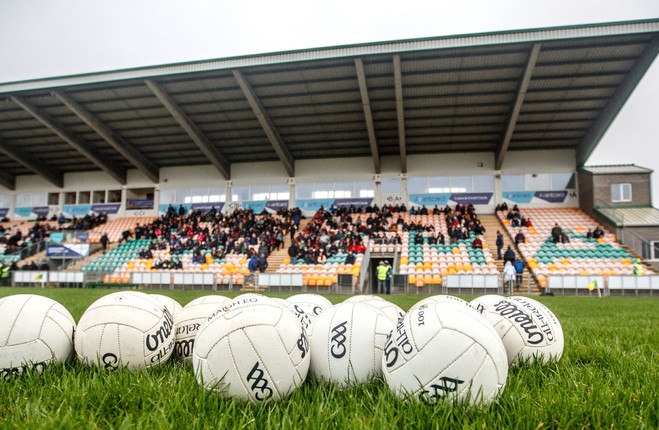INTRODUCING ANOTHER EPISODE of Behind the Lines, brought to you by the twin progressions of Skype and social distancing.
For the benighted and the uninformed, Behind the Lines is our now-weekly sportswriting podcast available exclusively to The42 members. Each episode features a lengthy chat with a writer about their career and their favorite pieces of sportswriting.
To sign up and get access to a 20-hour back catalogue, head over to members.the42.ie.
This week’s guest is Kieran Cunningham, who is the Chief Sports Writer with the Irish Daily Star. Among the many topics we covered in an hour-long chat is the relative absence of the GAA from the Irish literary canon.
We discussed one of the few classic Irish writers to weave the GAA into their writing: Patrick Kavanagh, and his fabulous short piece, Gut Yer Man.
To quote a couple of memorable lines…
The team we were playing were a disgusting class of a team, who used every form of psychological warfare. For instance, when one of them was knocked down he rolled on the ground and bawled like a bull a-gelding.
The man responsible for my deposition [as captain] was a huge fellow, a blacksmith, a sort of Hindenburg, whose word carried weight. He was a great master of the cliche, but sometimes he broke into originality, as the time we were going for the county final and he wouldn’t let us touch a ball for a week previous as he wanted us to be ‘ball hungry’.
Then there was the time I pulled the ball over the goal-line and a most useless non-playing member of the opposing team kicked it back into play. We argued and there was a normal row.
This led Kieran on to wondering why the GAA’s deep roots in Irish society were not frequently uncovered by Irish writers.
“The GAA is such a central part of Irish life, but it’s been largely ignored by Irish writers, which is very strange. John McGahern has a couple of stories in which its referenced, Seamus Heaney, Tom McIntyre, but there are very few examples.
“There was a huge snobbery among the literati to the GAA, and even in the broader culture. I remember in the 1980s, Hot Press used to be a bigger deal than it is now, it was quite a significant magazine. There was a lot of sneering in Hot Press, they used to call Gaelic football “bogball” and hurling “stickfighting.”
“It was a very different GAA, it was a very conservative and insular organisation at that time. The ban on so-called foreign games had only gone a decade earlier in ’72, the ban on members of the RUC was still in force, and you still couldn’t play soccer or rugby on GAA grounds.
“It’s brought up by a lot of people that there were three pillars in Irish life – the Church, Fianna Fáil and the GAA – and they were all seen as darkly conservative and very much as official Ireland.
“A lot of writers would have seen themselves as against official Ireland, I would have thought, so maybe that bracketed them all together.”
To listen to the conversation in full, you can sign up here.
To listen for free to some highlights from the first 12 episodes of this series, follow this link.
And you can read Gut Yer Man by Patrick Kavanagh here.

